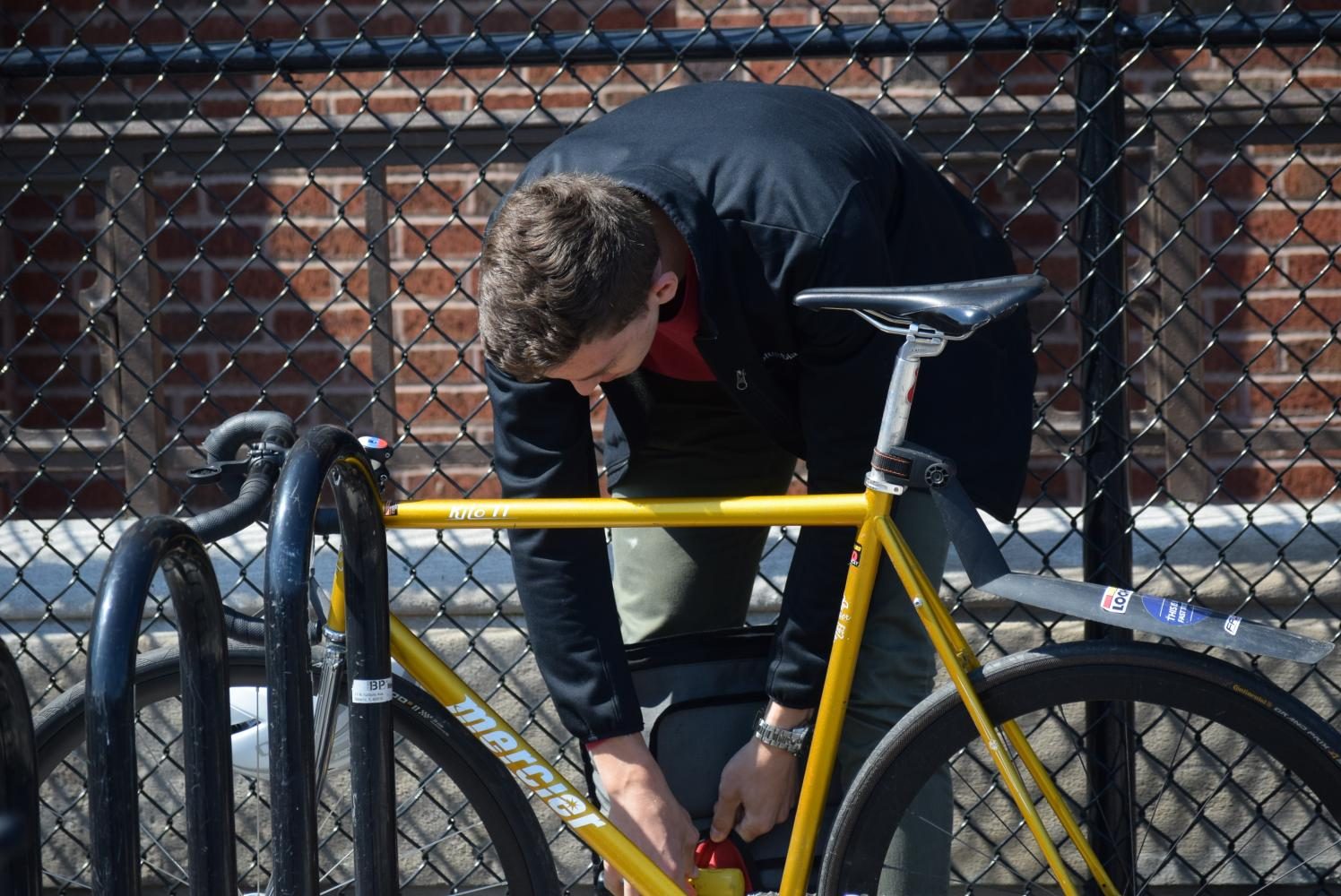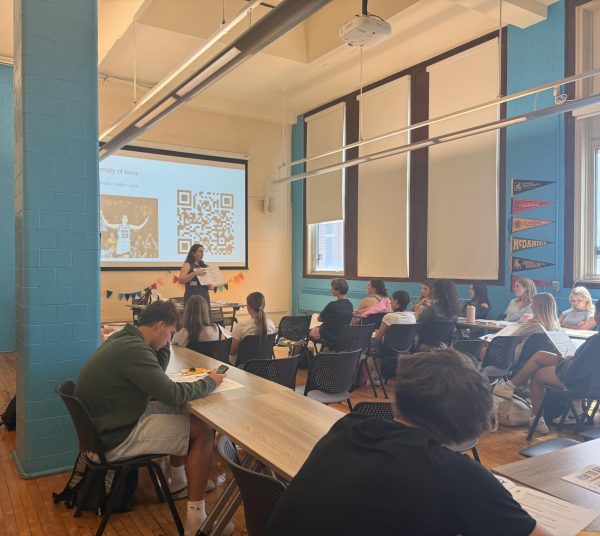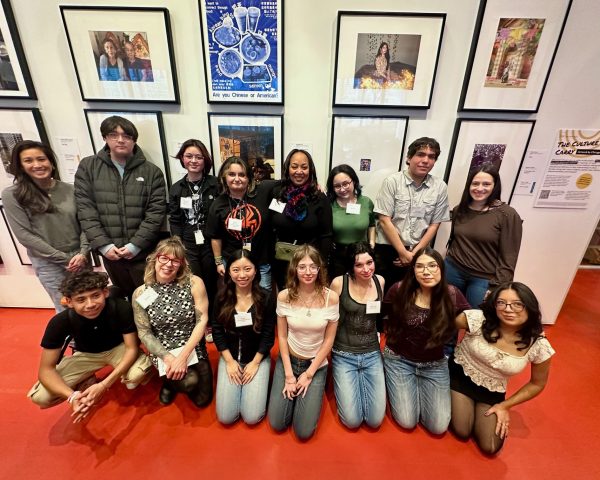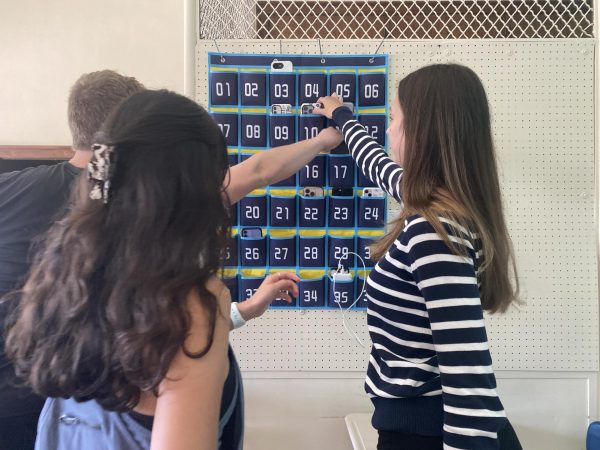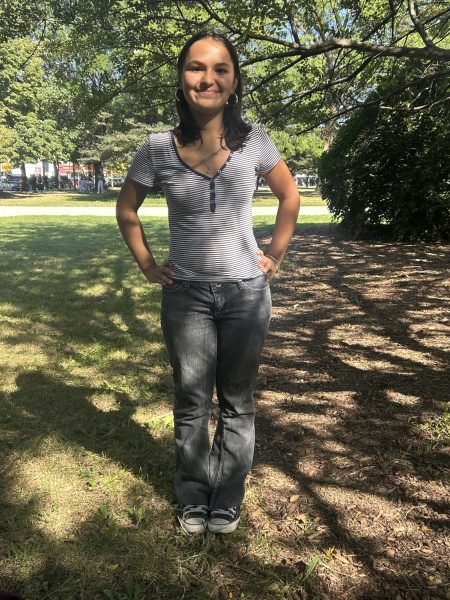Cyclists balance joys and dangers of biking
Aleksander Bolotin, Div. 766, locking up his bike by Door M.
Wind on my face, helmet strap digging into my neck, I ride the route I know by heart to school. I smile at the familiar bumps and marks on my favorite street: Damen Avenue. I love biking to school in the morning. I love the soreness in my legs after the ride and the reckless feeling of whooshing past cars, moving at my own speed.
Yet, every time I near the intersection of Damen and Addison, my heart skips a beat. I look to the left and see the pile of flowers surrounding the white bike. A bike never to be rode again.
I hold my breath till I pass.
On Sept. 26, 2016, a biker was struck and killed mere blocks from Lane on the corner of Damen and Addison.
According to DNAinfo, the woman had been on her way to work around 7:50 a.m., when a flatbed truck turned right onto Addison, crushing the woman underneath its wheels, killing her on the scene.
This is just one of many bikers killed or severely injured from accidents this year alone. According to the National Highway Traffic Safety Administration, bicyclist deaths occur most often in urban areas between 6 a.m. and 9 a.m. That’s a time when most people are on their way to work and school, making roads busy and even more dangerous.
The repercussions of a bike accident can be devastating. Mr. Kopack, a chemistry teacher at Lane and bicyclist knows this to be true.
“It’s not natural not to wear a helmet anymore,” Kopack said. “I have a friend who was an accountant, and he fell off his bike over the handlebars and he had a mild brain injury and can no longer add and subtract numbers anymore. His profession was taken away from him.”
Kopack has loved bikes ever since he got his first Schwinn Stingray when he was six years old. After many years as a bicyclist, he knows the ups and downs of biking in the busy city.
“In the city [biking] makes more sense, you can get around faster, you can get in and out of places quicker,” Kopack said. “It gives me a chance to be outside and engage in the environment that I live in instead of going from home to school, school to home.”
Kopack said he’s seen a change in drivers since the explosion of ride share companies.
“They don’t know the city and are coming in to make an extra buck,” Kopack said.
The Active Transportation Alliance (ATA) is an organization committed to making biking and walking safer around Chicago, along with educating the city on the topic of bike safety.
Jala Williams, the Education Director at ATA, leads beneficial programs at schools, such as the “Build a Bike program,” where children learn how to assemble and ride a bike safely. Williams said he believes education on bike safety is important to make riding safe and fun.
“Accidents make what I do all the more important to educate people and minimise the risk of any type of accident,” Williams said. “Some of them are going to be unavoidable, but there there are many things you can do to avoid an accident in the first place.”
Williams said ATA is advocating for more multi-use bike lanes in Chicago, along with maintaining bike lanes to increase safety.
“Just last year Chicago completed over 100 miles of bike lanes, which was one of Mayor Emanuel’s many achievements that he would like to celebrate,” Williams said. “One of the things we work with the city of Chicago on is making sure these bike lanes are well marked and well maintained, as well as efforts to make sure they’re used properly and that they’re not blocked by vehicles or construction equipment.”
Lane has a large biking population. Aschalw Ayele, Div. 851, bikes to and from school whenever the weather allows him to. Like many bikers, Ayele isn’t currently wearing a helmet. The helmet he ordered online has not arrived yet, but he said he wishes he had it now, especially when reflecting on an accident he was in.
“I got doored by a car,” Ayele said. “they opened the door, I shouldered the door and the door ripped off sadly. I kept on biking and when I got home my whole shoulder was bruised,”
Although the incident was risky, Ayele’s accident hasn’t stopped him.
“It’s fun — you get an adrenaline rush because you might get hit, you might not get hit,” Ayele said.
Ayele’s main tips for student bikers are simple; wear your helmet and lock your bike up well.
“I know Lane has a lot of bike thieves around,” Ayele said.
Kopack has an array of ideas to ensure bike safety and security.
“I think there should be a bike safety class here at Lane,” Kopack said. “That would be really useful. I see a lot of the kids riding on Western, and that’s just asking for it. The helmet is important, the lights are important. It’s important to know the rules of the road as a driver, not just as a bicyclist.”
Kopack would also love to start a bicycle school bus, a new safety technique being used around the country.
“If somebody lives on the far north side, they start collecting people on their bikes, and then it becomes a little critical mass coming to school,” he said.
In 2015, San Francisco hosted the largest bike-to-school event in the country. Students arrived at school in “bike trains” with adults leading groups of children bikers, according to an article on the San Francisco Bicycle Coalition’s website.
Along with new measures to increase bike safety, Kopack envisions efforts to make locking up bikes safer at Lane. Kopack would like to see a bike canopy over the bike racks to shelter bikes and riders in bad weather.
“Could you imagine if we replaced all the cars with bicycles?” Kopack said. “That’d be super awesome.”
Your donations directly fund the Lane Tech student journalism program—covering essential costs like website hosting and technology not supported by our school or district. Your generosity empowers our student reporters to investigate, write, and publish impactful stories that matter to our school community.
This website is more than a publishing platform—it's an archive, a research tool, and a source of truth. Every dollar helps us preserve and grow this resource so future students can learn from and build on the work being done today.
Thank you for supporting the next generation of journalists at Lane Tech College Prep!

Simone Brenner is an A&E Editor for the Warrior. She is passionate about writing and learning new things about the people at Lane and events going...
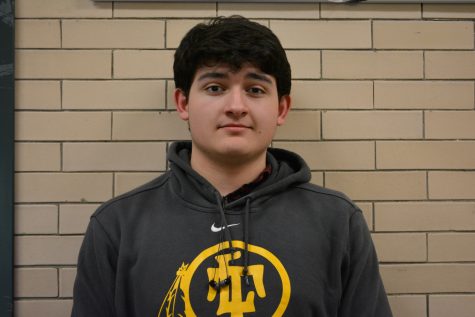
James Coyne started Journalism in his sophomore year and became the Photo Editor his senior year. He has focused most of his work towards the feature...

